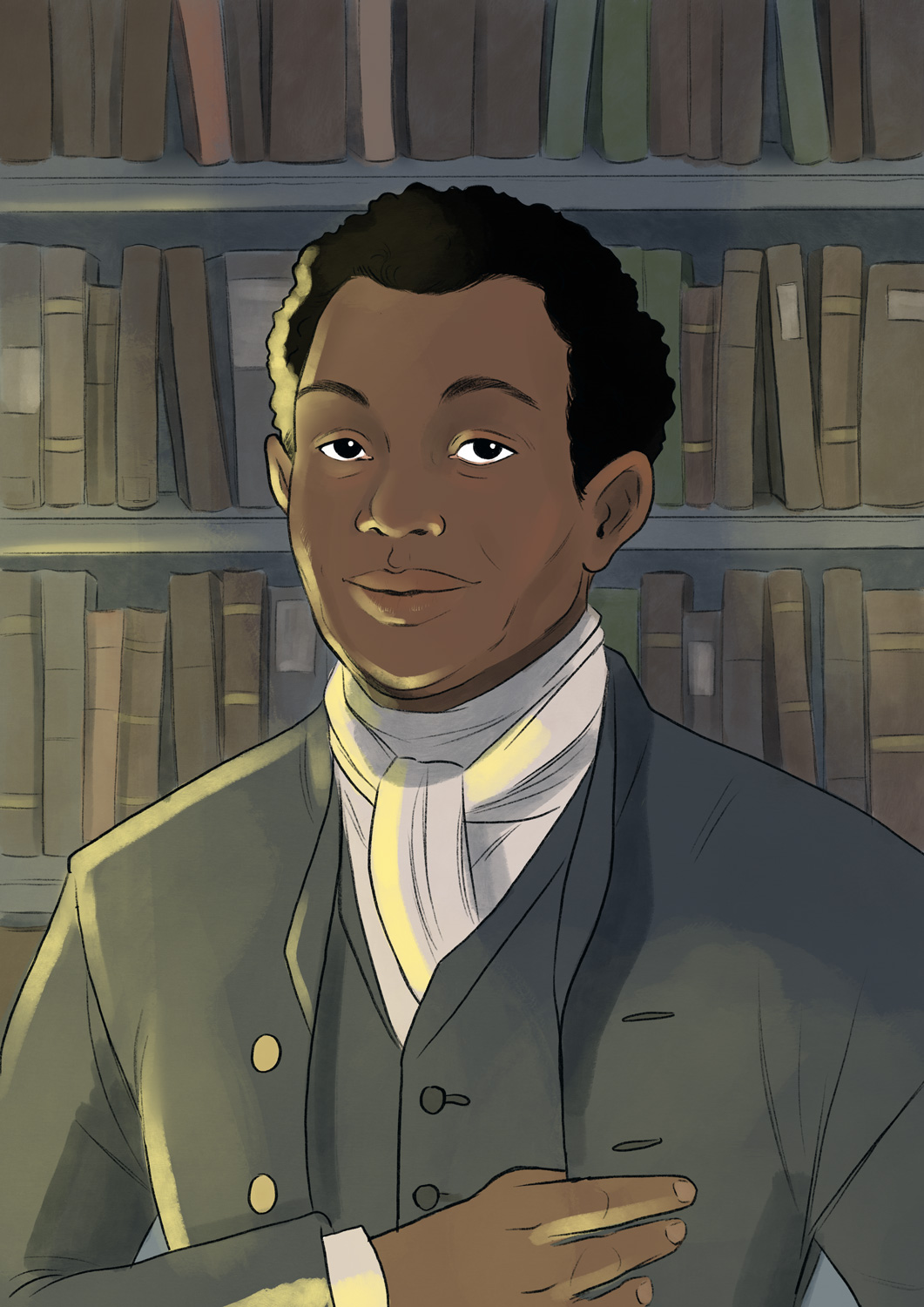
The boy then stayed with another family for a couple of years before joining the Swedish court around 1760. He worked for the Swedish Queen Lovisa Ulrika. She was married to King Adolf Fredrik and had four children. Gustav Badin was about ten years old when he came to the royal court in Stockholm, and the royal children were roughly the same age. Crown Prince Gustaf (III) was thirteen years old, Karl (XIII) was eleven, Fredrik Adolf nine, and Sofia Albertina just six. Gustav Badin grew up at the court in the immediate vicinity of the royal family. He is undoubtedly the most famous Afro-Swede in history.
Gustav had a free upbringing, inspired by the French philosopher Rosseau's book 'Émile' (1762), which was very current at the time. He was taught the Christian faith and baptized in the Royal Chapel of Drottningholm Palace in December 1768. The royal family attended as Godparents. He got his many first names - Adolf Ludvig Gustav Fredrik Albert - after them.
Gustav Badin still served at court as an adult. He worked close to the Queen and, following her death, to Princess Sofia Albertina. He participated in court life, danced ballet, and played theatre.
After Queen Lovisa Ulrika died in 1782, Gustav Badin was given a couple of crown farms close to Stockholm. He could now call himself a farmer but spent most of his time in Stockholm. He built up an extensive private library and was active in the secular fraternal orders that flourished in the late 18th Century. Gustav Badin was a respected member of the Svea Orden, Timmermansorden (the Carpenter's Order), Par Bricole, and the Order of Freemasons. He also wrote a diary which is today preserved at Uppsala University Library.
Gustav Badin married twice. His first wife, Elisabeth (Betty) Svart, was the daughter of a wholesaler, whom he married in 1782, aged 35. They had only one child, who died as an infant. In 1799, after Betty's death, Gustav Badin married Magdalena Eleonora Norell, the daughter of a shipbuilder. Unfortunately, the second marriage was also childless, and there are no descendants of Gustav Badin today.
Gustav Badin was over seventy years old when he died. In March 1822, he was buried in the Katarina Church Cemetery in Stockholm.
Sources
Information about Gustav Badin was sourced from Swedish Wikipedia, see Gustav Badin – Wikipedia
Read his diary at Litteraturbanken
The life of Gustav Badin was also the inspiration for at least two works of fiction: 'Maroonberget' by Ola Larsmo (1996), also published in English as 'From Maroon Mountain' (1999), and 'En av dessa timmar' by Ylva Eggehorn (1996)(One of these hours). Here should also be added Eric Basir’s historical-fiction graphic novel ”Badin and the Secret of the Saami” (2017) and the minisaga on Badin and Sparrman that he created for Etnografiska museet in Stockholm (2018).